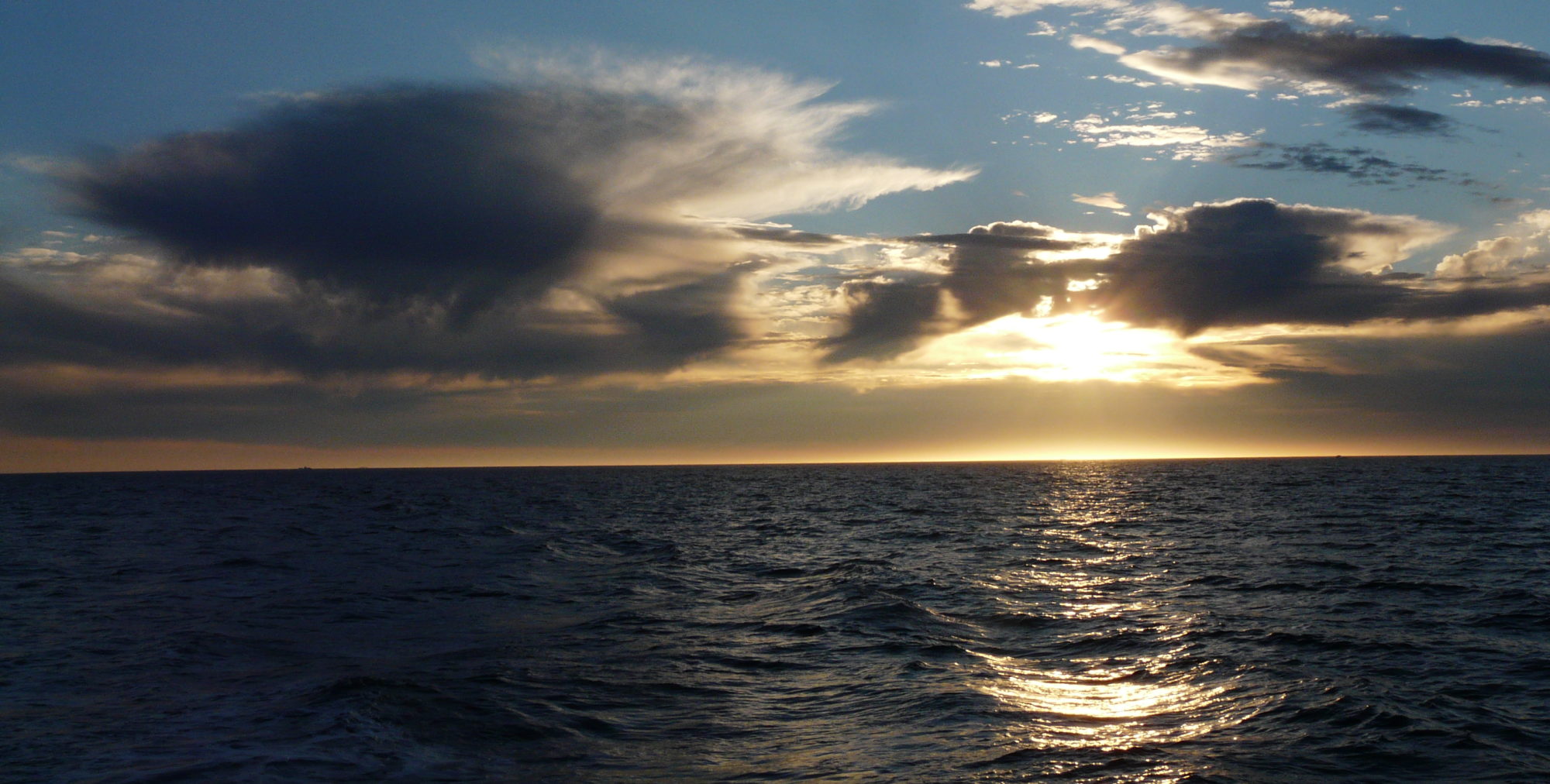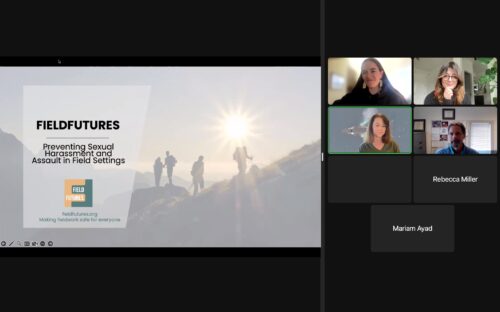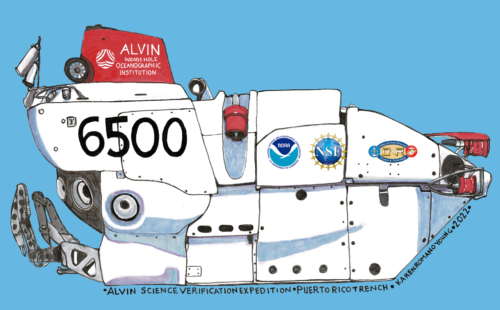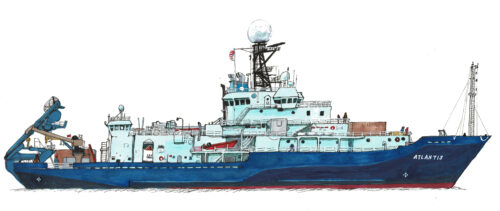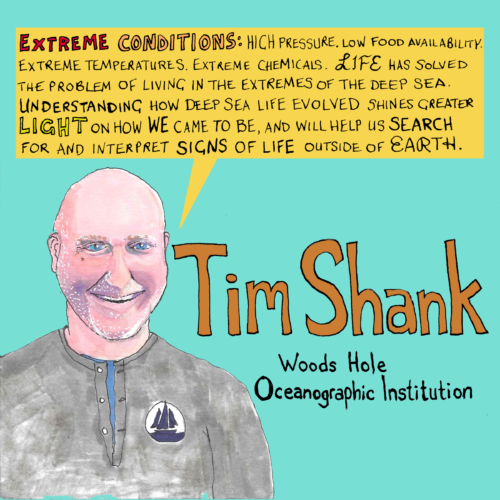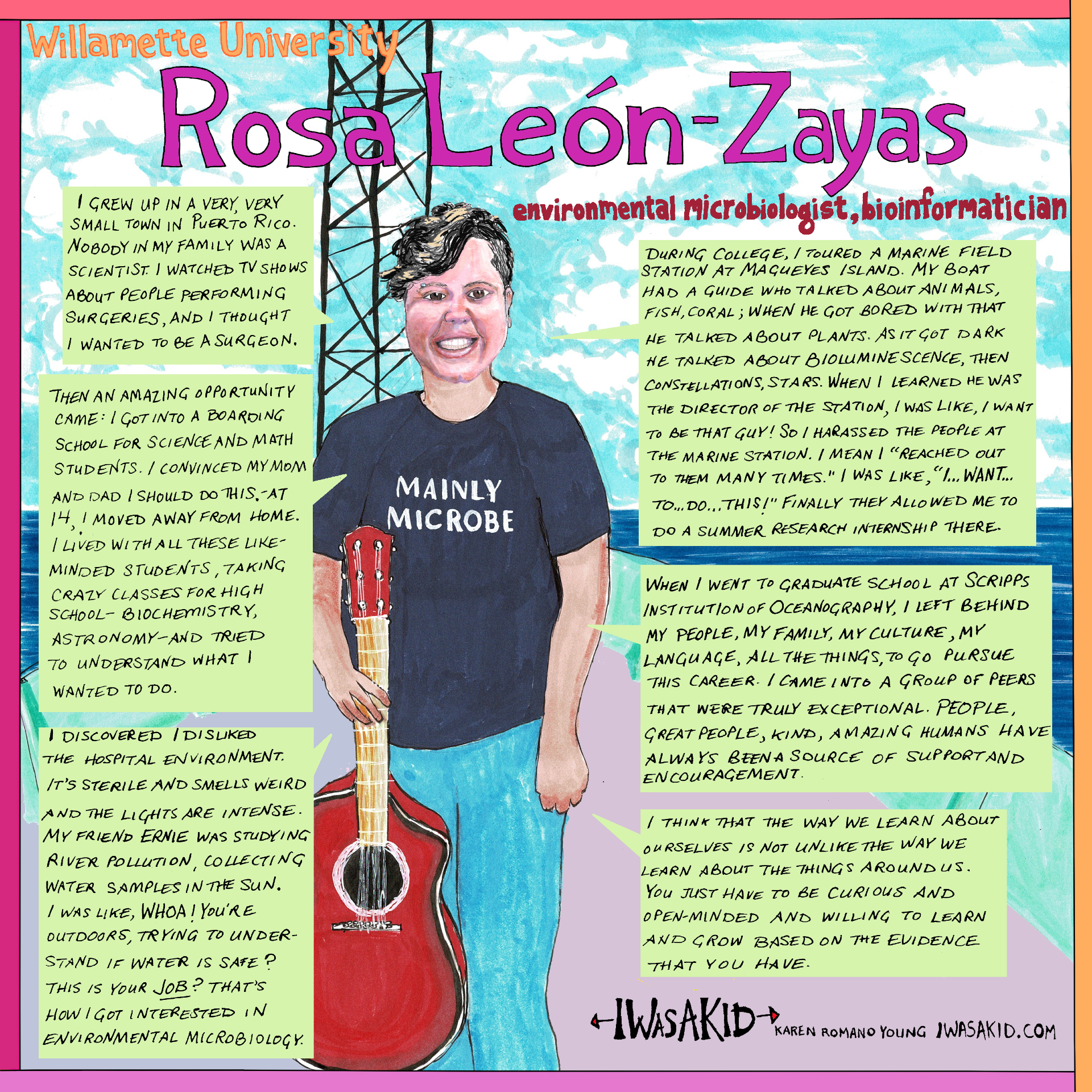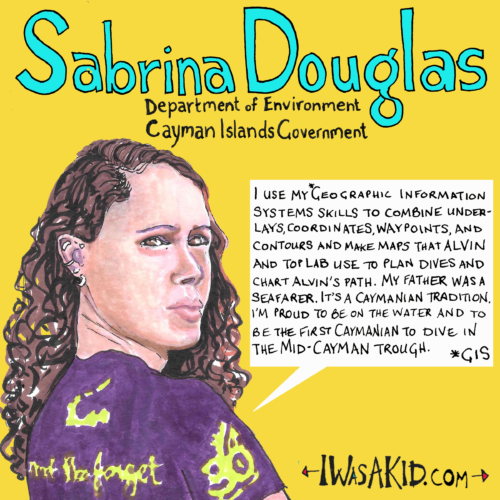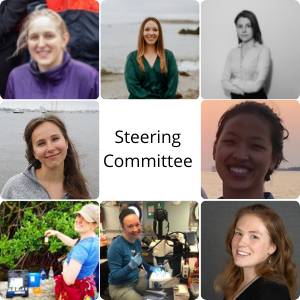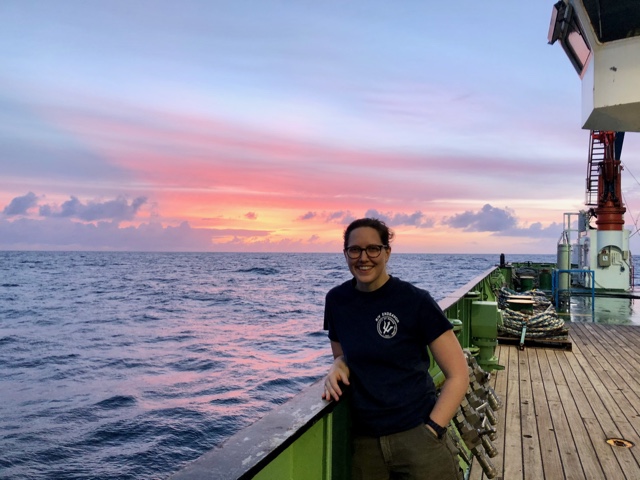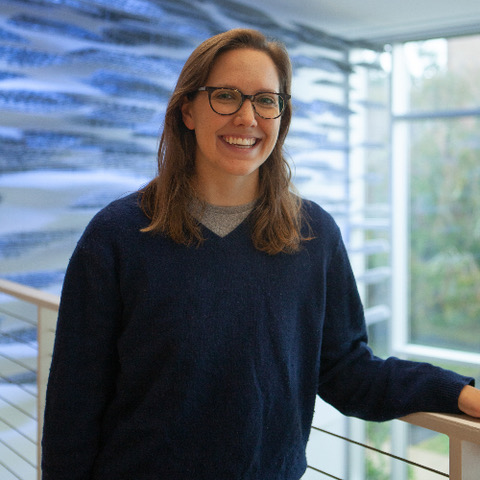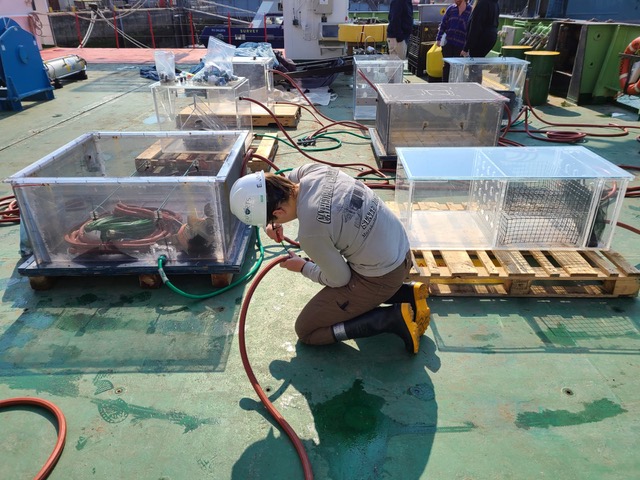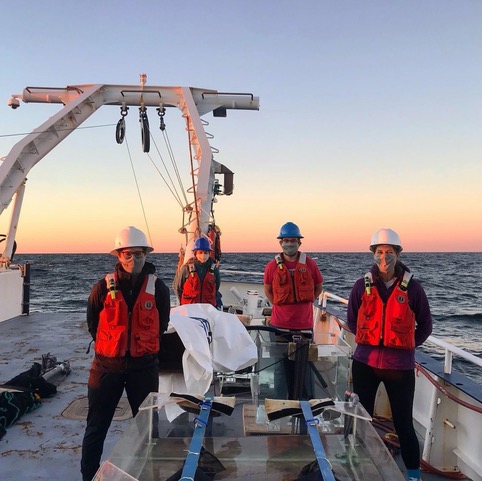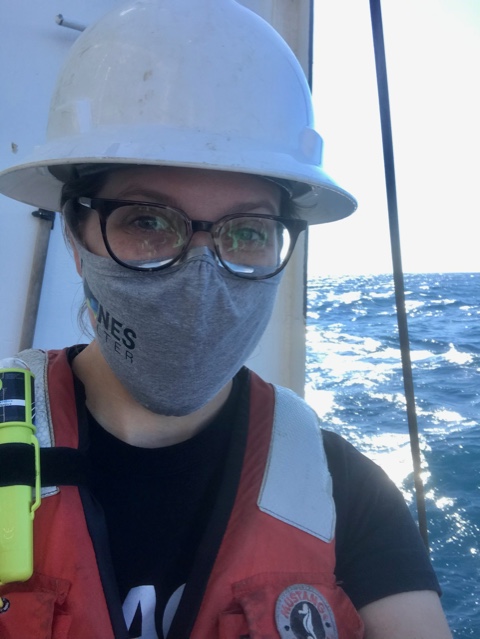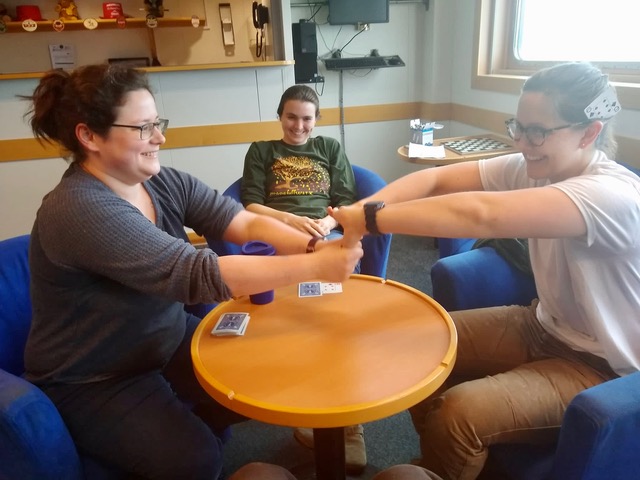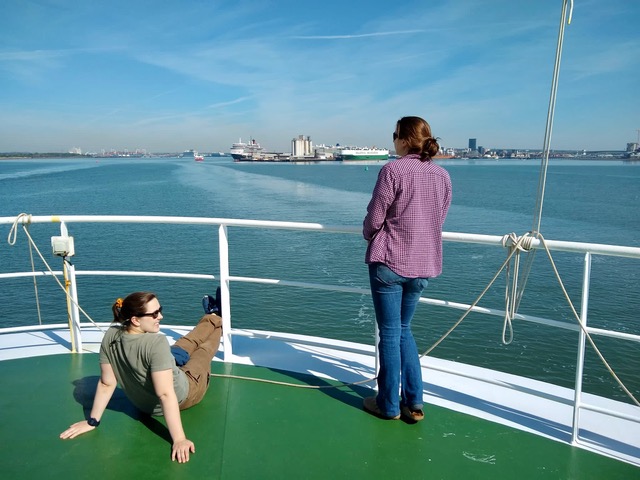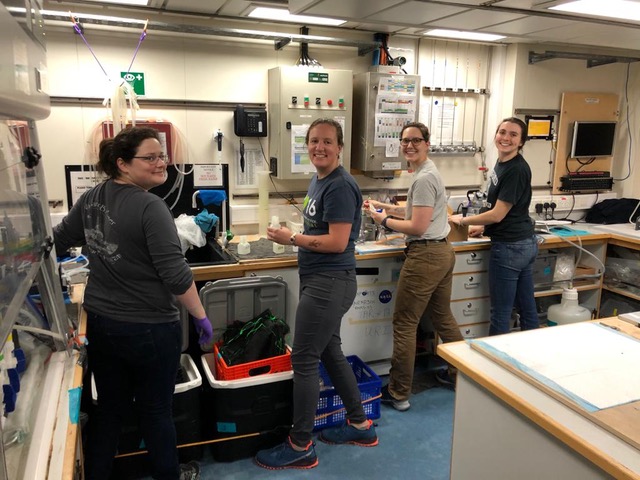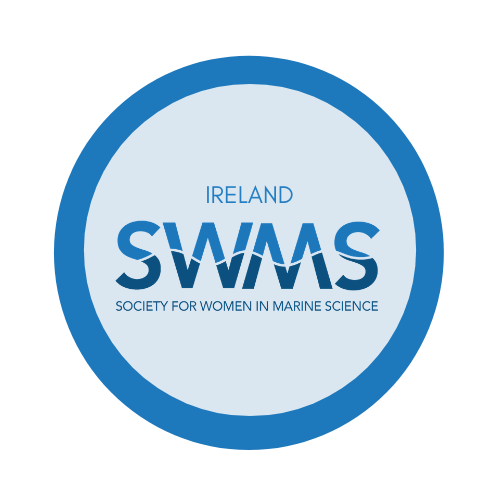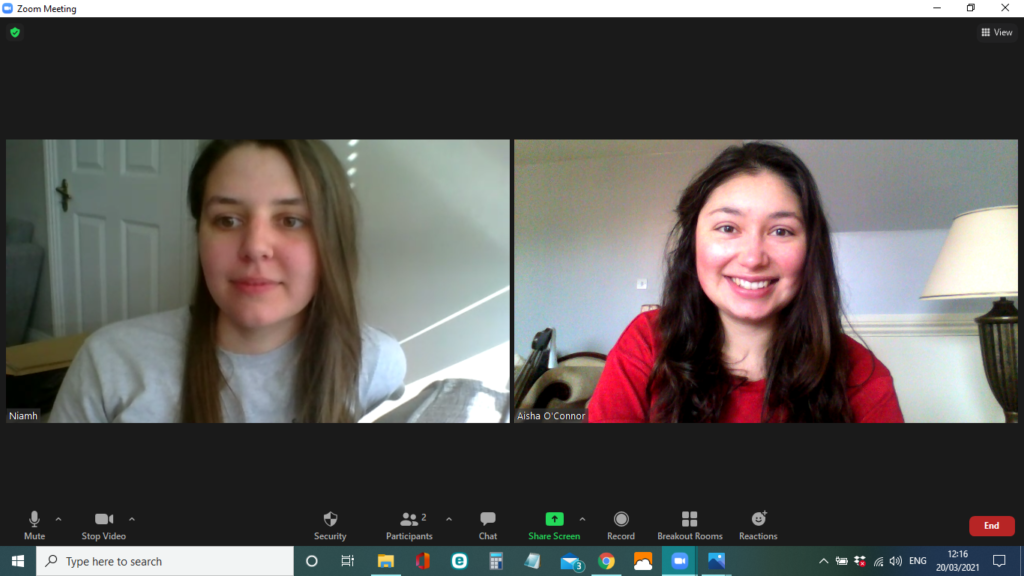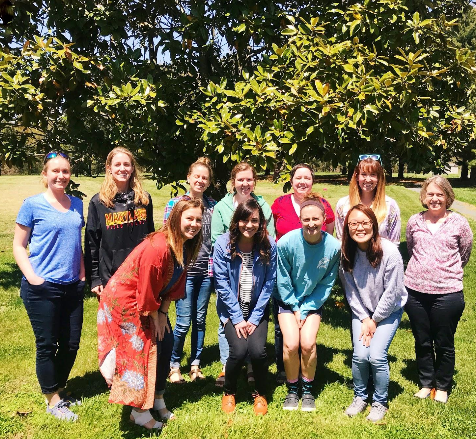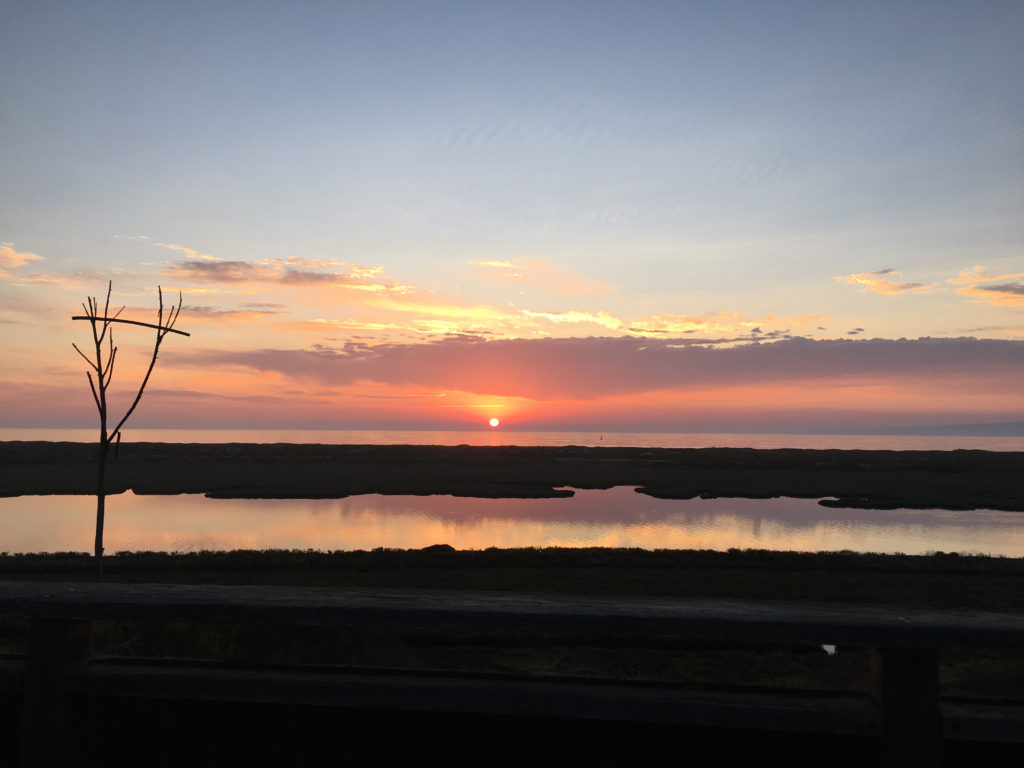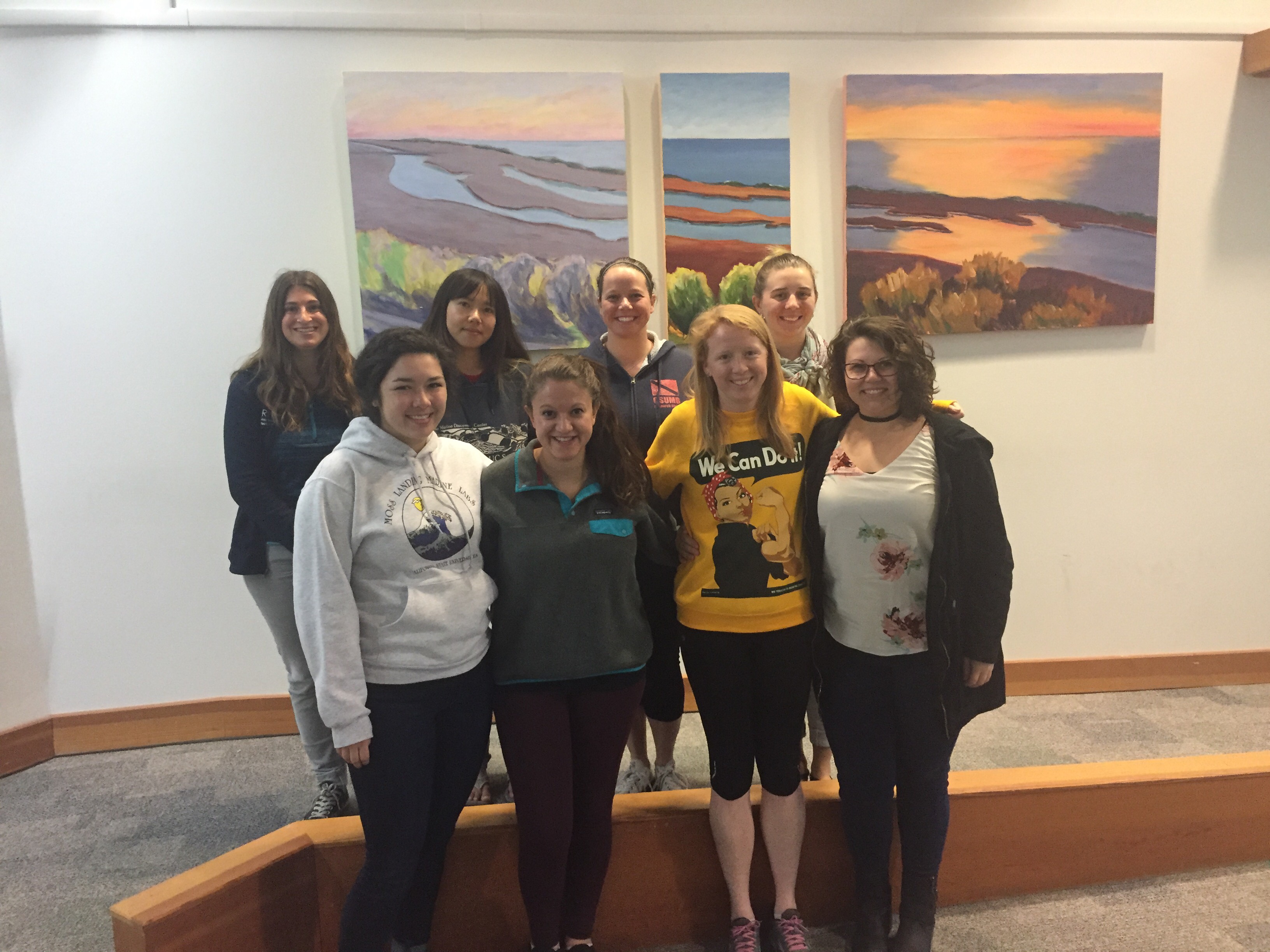As I gaze at the sapphire-blue water surrounding our vessel, I know that just 2 kilometers below me is one of our planet’s harshest environments: an ancient basin full of salt and toxic gases. Also called “Pools of Death”, deep hypersaline anoxic basins (DHABs) are unique seafloor features where salinity increases to 10 times that of seawater and oxygen concentrations approach zero. These environments are cold, dark, and pressure is greater than 200 times that at the ocean’s surface. Deep-sea animals that swim into DHABs are poisoned by hydrogen sulfide and methane gases before being pickled and preserved by the salty brine. Despite these extremes, the top layers of the basin are thought to be hotspots of microbial activity.
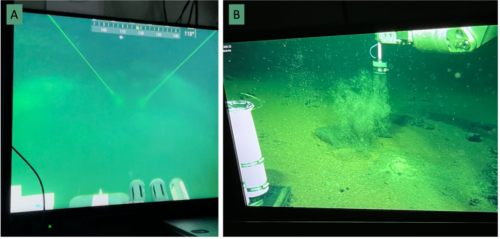
Some consider these basins analogous to other ocean worlds, like the briny moons of Jupiter and Saturn. As a part of the NASA-funded Oceans Across Space and Time (OAST) team, I had the opportunity to sample Orca Basin—a 400 km2 DHAB in the Gulf of Mexico—during Summer 2023. During our twelve days aboard the R/V Pt Sur, our team of 13 scientists and engineers conducted 21 CTD casts and 11 dives with a remotely operated vehicle (ROV) upon which 10 sediment cores were collected from deep within the basin. I spent most of my time (sometimes up to 10 hours a day!) in the cold van (~4°C), where my microbial samples would not be exposed to the heat and humidity of the Gulf during summer. This meant donning a beanie and jacket despite it being hotter than 80°F outside. Since we also want to do our best to keep the environmental conditions the same as they are in situ, this also meant that the cold van was kept dark to mimic the deep-sea. We took all of these steps, and I spent a lot of time in the cold, dark van, so that we could reduce the impact of experimental set-up on the microbes’ activity levels.
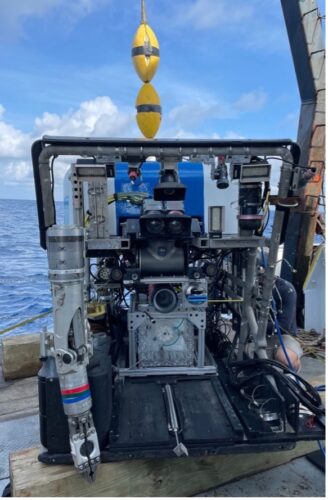
We spent Fourth of July onboard, which required wearing star-shaped glasses during our daily activities and included a delicious steak and lobster dinner from David, our cruise chef. During my free time, I made T-shirts and organized an awards ceremony for the crew and science team with superlatives written on shrunken Styrofoam cups. When Styrofoam is placed under the extreme pressure of the deep-sea, it shrinks, creating decorated cruise souvenirs ranging from colorful cups to shrunken Styrofoam heads. A little morale-boosting fun goes a long way on a multi-week cruise!
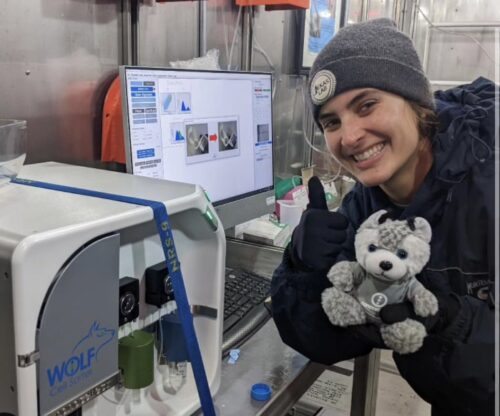
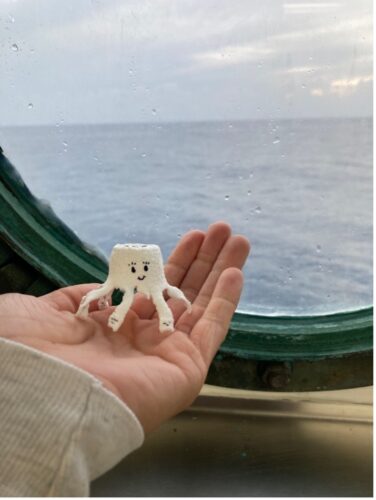
I am fortunate that this was not my first cruise. I am part of a deep-sea microbiology lab, so it was assumed (but not guaranteed!) that I would get to go on a cruise at some point during my PhD at Stanford University. In graduate school, I’ve gone on three cruises ranging from one day to two weeks, with a fourth planned for next summer. It’s not something I sought out when applying to my graduate program, but rather something that just came with the task of studying the deep-sea. If people are in labs that do not frequently participate in cruises but want to participate, sometimes cruises will have extra berths available for collaborators to join, so if you are interested in getting on a scientific cruise yourself, you could look for similar opportunities! I have also reached out to collaborators on other cruises asking for them to collect specific samples for me, which is another way to get precious samples that could otherwise take a lot of time and money to collect!

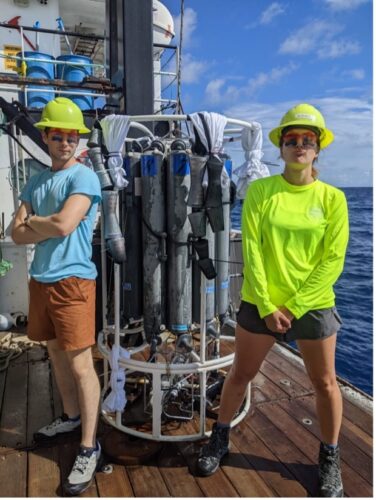
While each scientist onboard had a different project, my goal on this cruise was to understand how compounding environmental stressors impact the efficiency of various microbial metabolisms. This is important for quantifying nutrient cycling and predicting shifts in the face of global environmental change, as well as for planning life detection missions on other planets. We were lucky to have a WOLF NanoCellect cell sorter on the cruise, which allowed me to separate metabolically active from inactive cells at various depths within the brine and preserve their DNA for sequencing. These samples will allow me to explore what adaptations allow a cell to survive as an environment becomes more extreme.
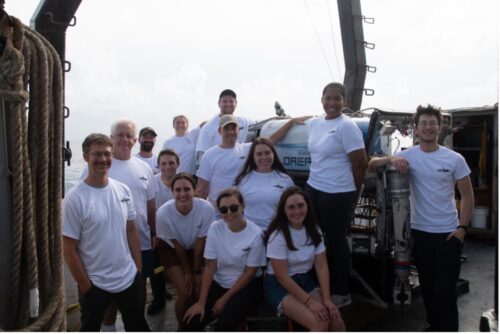
This project was funded by NASA grants 80NSSC18K1301 and 80NSSC22K1409. We would like to thank Britney Schmidt and the entire Oceans Across Space and Time team (field: J. S. Bowman, E. D. Ingall, S. Buessecker, C. Pozarycki, C. Ross, M. Desmarais, C. Elbon, C. Sephus, J. McKaig, M. Meister, A. Mullen, and V. Hegelein) as well as my P.I., Anne E. Dekas (Stanford University) and members of the Dekas Lab. I would also like to thank Mike, Jason, and Nate from Oceaneering, the crew of the R/V Pt Sur, as well as our collaborators at Louisiana State University and the Louisiana Universities Marine Consortium.
Written by Emily R. Paris
Edited by Katie Gallagher, SWMS Communications Lead
